I Practiced Spanish with Babbel Every Day for Two Weeks — An Ho…
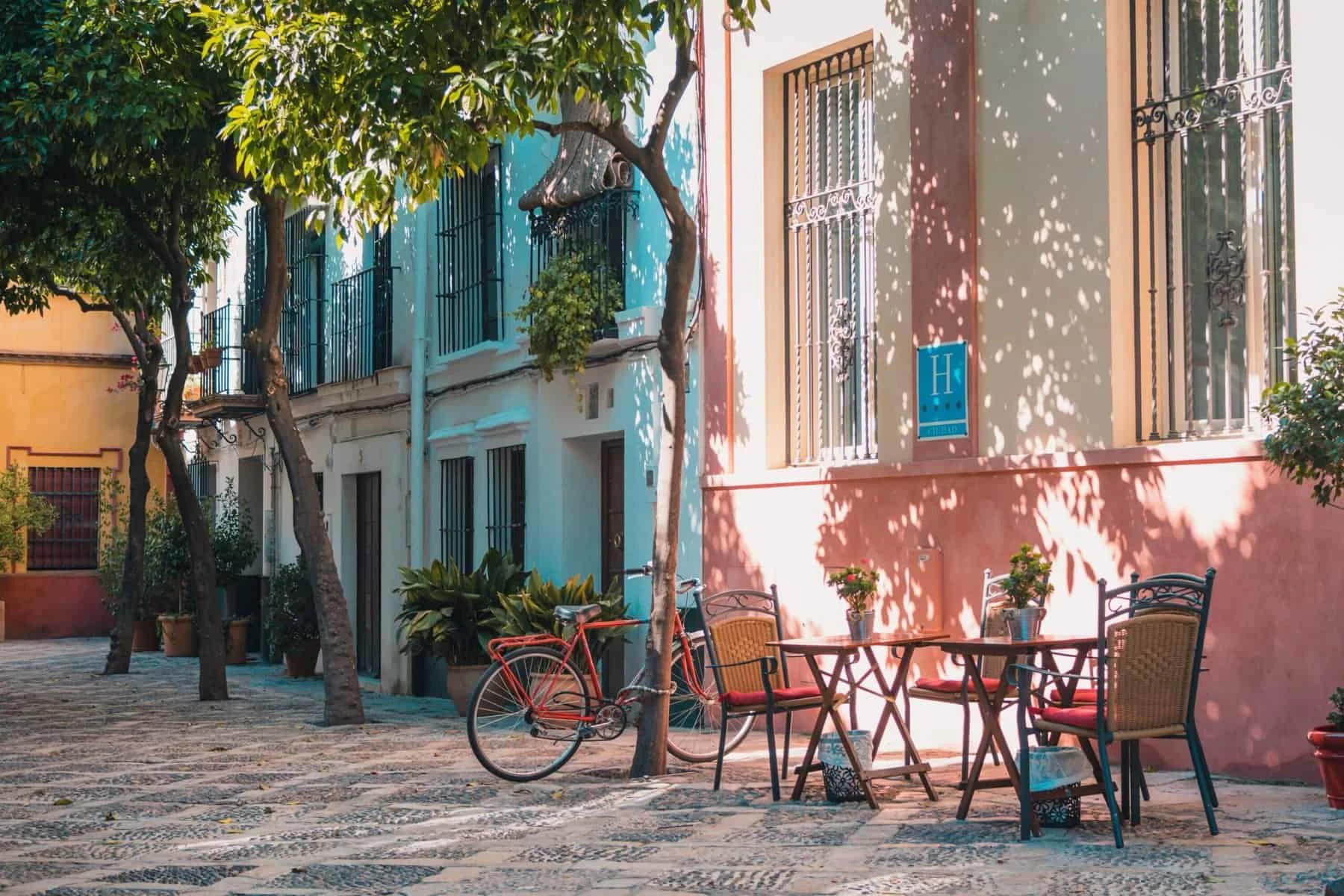
If you’re a Spanish language learner like me, you probably already know how challenging it can be to practice regularly. During my years-long journey to become fluent in Spanish, I’ve tried almost every app, tutoring service, and free content available.
Recently, I decided to turn to Babbel to practice my Spanish for at least 15 minutes every day – for TWO WEEKS straight! A fun experiment, right?
In this article, I’ll share my experience and honest review of Babbel, so you can decide whether it’s for you. I’ll also answer the question, “Is Babbel good for Spanish?”
#1 Pick
Limited time offer: Get up to 55% OFF!
Babbel helps you learn languages for real-life scenarios through conversations, avoiding random words and phrases. Using spaced repetition, it reinforces words for long-term retention and offers personalized learning paths for each learner.
Now, let’s dive into my Babbel Spanish review.
Because I travel solo to many of the destinations I visit abroad, it’s especially helpful to know at least a few basic phrases of the local language.
A language learning app can be useful not just for nailing the basics — but also mastering grammar.
I’ve found it essential to arrive in my new destination with at least a few phrases of the local language, like “Where are the bathrooms?”, “Thank you!” and, “Can I please have…?”
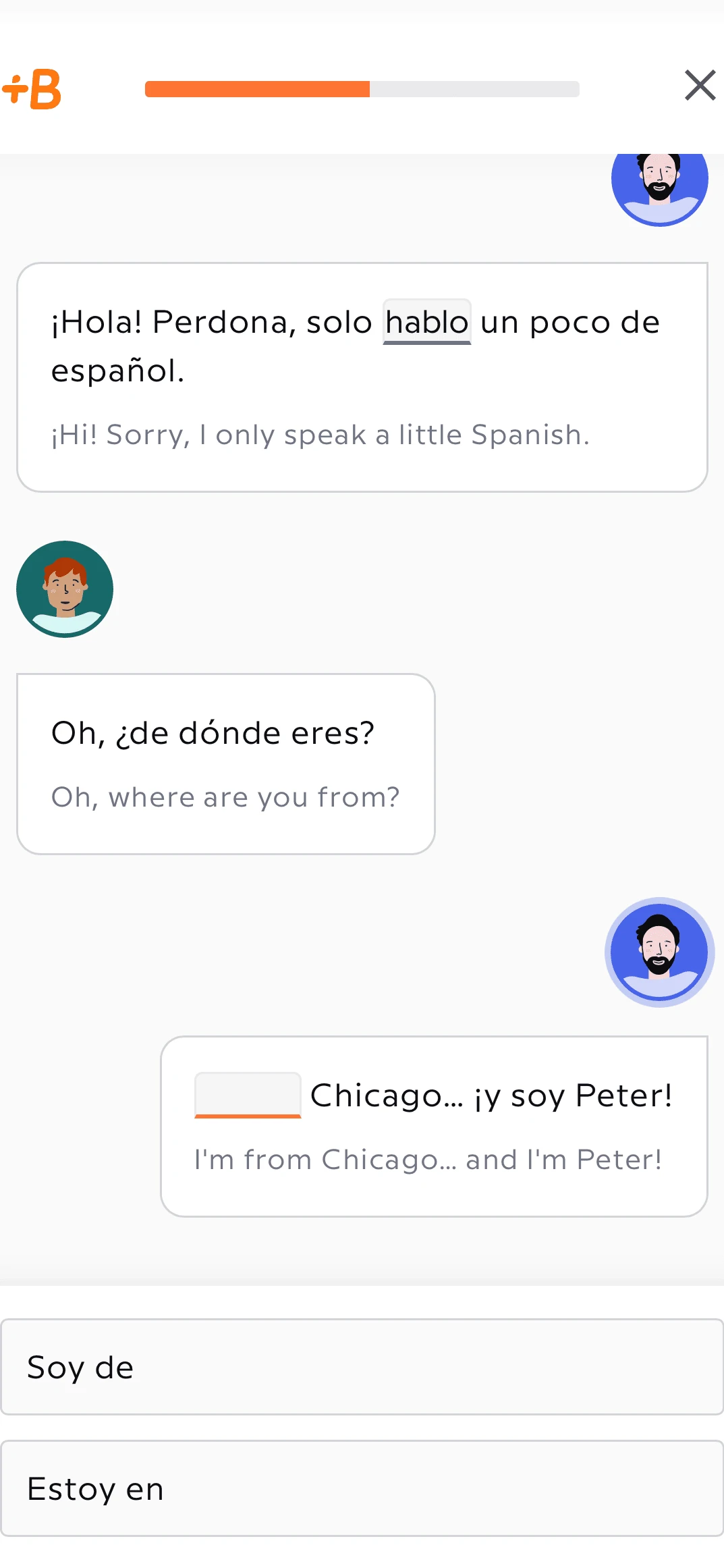
Even small moments of connection, like having small talk with a grocery store clerk about the weather, can have a meaningful impact on both people.
I believe there truly is no better way to respect a place and its people than by learning a bit of the language — especially with Spanish, since it’s already so common in the U.S., and similar to English in many ways.
With Babbel, you can learn Spanish through quick lessons that help you practice pronunciation, reading, and writing.
You can go through the lessons in the app or sign up for live online classes.
Before we move on to the full Babbel review, a quick heads up — Babbel gave me a free trial to try out the Spanish language course, but the company didn’t compensate me in any other way to write this review.
Also, I’ve paid for a Babbel subscription twice in the past (I subscribed for 6 months, and then a year). Full disclosure, if you do decide to sign up for Babbel using my link, I’ll earn a small commission at no extra cost to you.
My Babbel Review: What I Loved
After two weeks of using Babbel every single day, I can honestly say that there were many things I loved about the app.
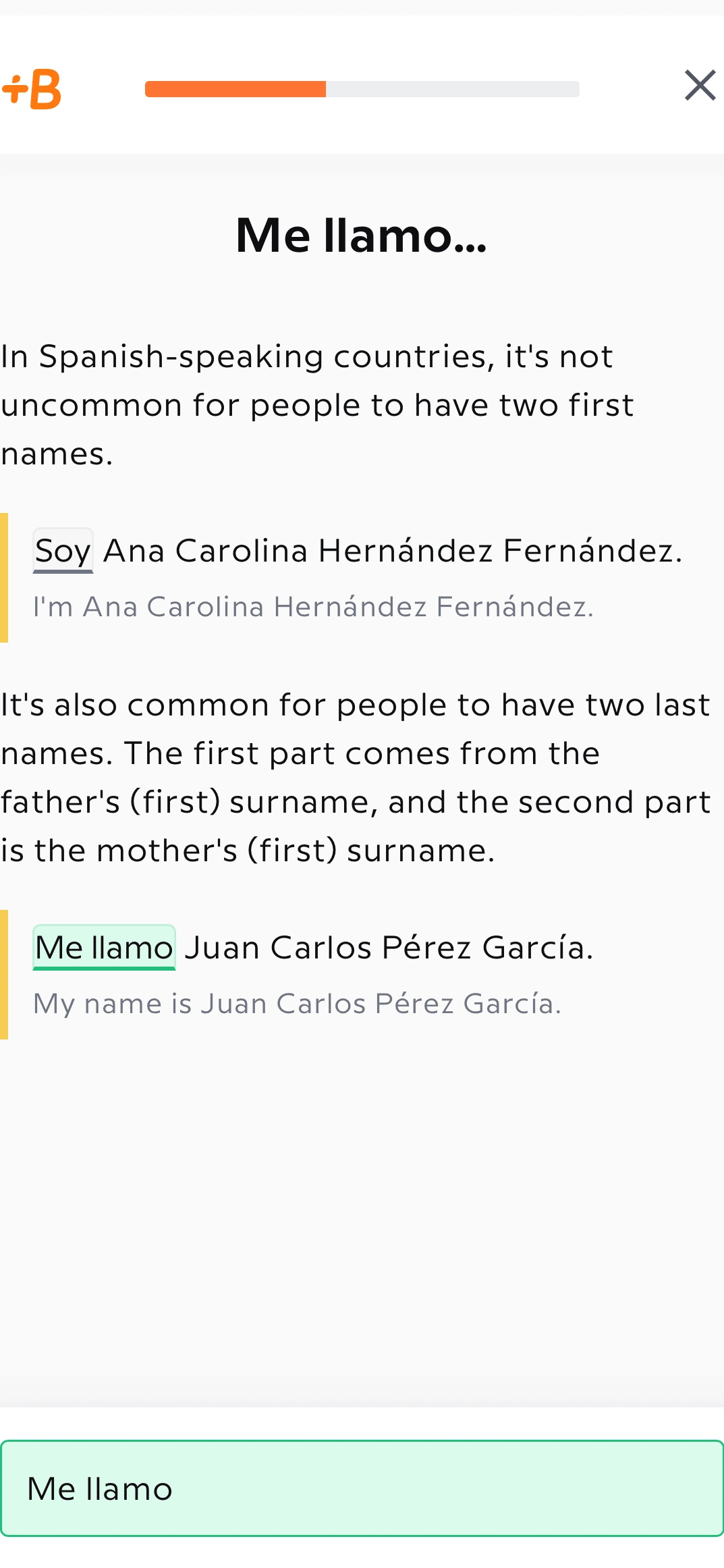
It has a leg up on its competitors, in my opinion, in design — the look and feel of using the app is clean and modern rather than cartoonish, which I think is nice.
More Things I Loved about Babbel

Cultural tidbits: I find it absolutely fascinating that the app teaches you Spanish, but also includes insights into cultural traditions of Spanish-speaking countries. The little pop-ups with information, explaining the concept of siesta or the common practice of having two first names and two last names, are both intriguing and incredibly useful.
Courses about cultural traditions & common travel phrases: I love that Babbel has a section on cultural traditions throughout the Spanish-speaking world and lessons specifically about travel. You can learn travel-related vocabulary, like ‘maleta’ for suitcase and ‘el asistente de vuelo’ for flight attendant.
Real-world conversations: The content in the Babbel coursework involves things you’d actually talk about in real life. It feels good learning phrases that I would actually use in real life like travel, food, and the weather, rather than a random, obscure topic.
Reputable: The app is one of the top language learning apps in the world, so it’s a name you can trust to have reliable, accurate information.
My Babbel Review: What I Didn’t Love About Using Babbel
I ran into a technical issue where I found it hard to choose my level from the get-go. If you’re already at an intermediate level in Spanish, you might have to pass through the Newcomer lessons in order to get to the more advanced classes.
The upper levels (B1, etc.) have less coursework than newcomer levels.
There is no free version.
Cost of Using Babbel App
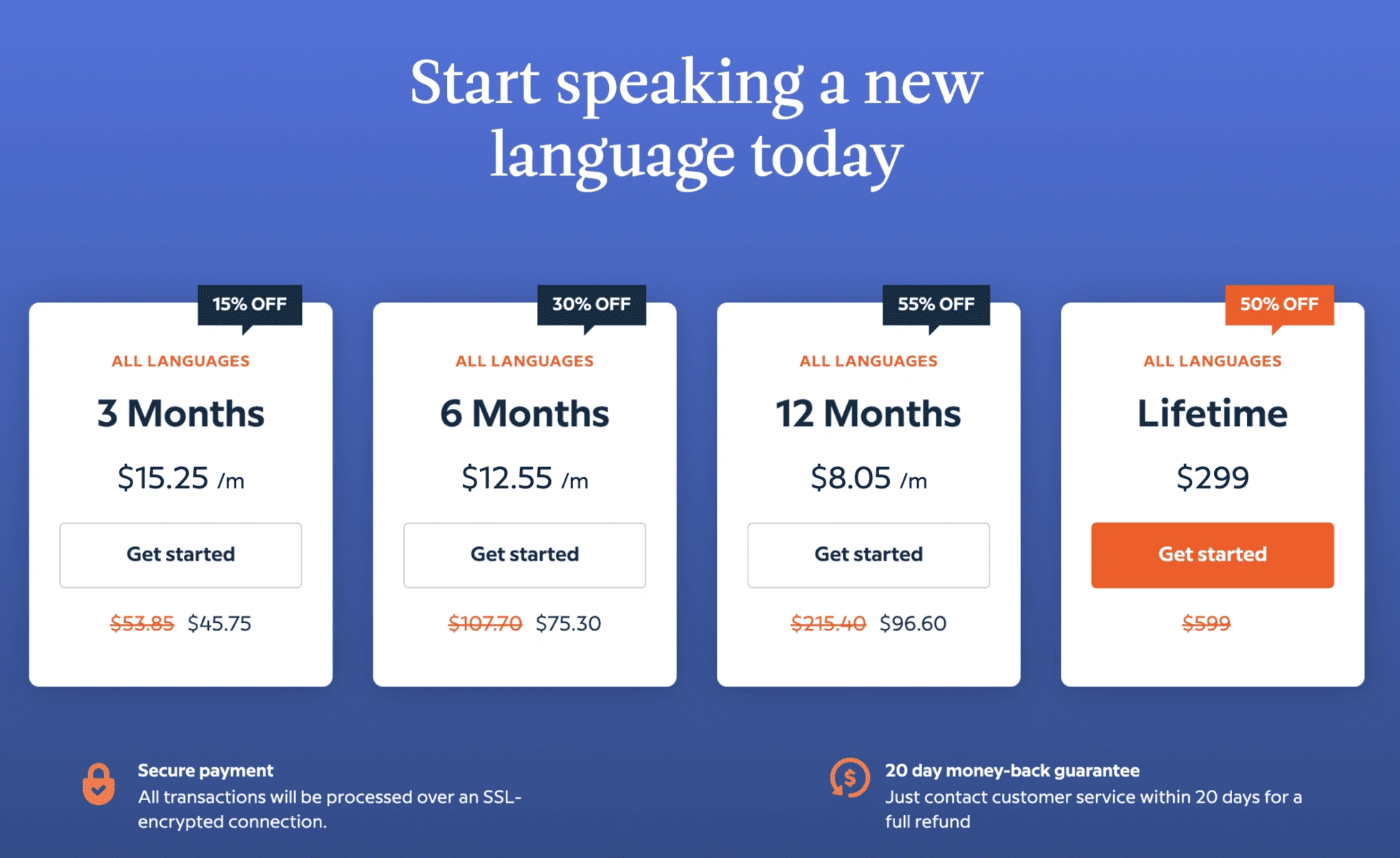
Although all subscriptions of Babbel are paid (there is no free version), you can try Babble for just one month for as little as $17.95.
I think that’s a pretty decent deal, considering the quality of the course material. Plus, the fact that there are no ads to be annoyingly interrupted by.
Pricing gets better the longer you subscribe for.
There is even a lifetime rate, where you can access ALL languages if you want to learn more than just Spanish.
My opinion: If you’re new to Spanish and trying a language learning app for the very first time, go with the three-month plan.
That’s long enough to know if you like the service or not, but short enough not to be TOO much of a financial commitment.
If you try it and find that you aren’t using it as much as you want, there’s a 20 day money-back guarantee. You just have to write to customer service and they’ll refund you. That’s awesome.
Plus, if you sign up now using my link, you can get 55% off.
All in All, My Honest Babbel Spanish Review
Every day in the morning during my two-week Spanish practice marathon, I’d get a reminder on my phone to open the Babbel app.
It was quick and easy to get started practicing. The app is usually very user-friendly and easy to navigate.
I already know a bit of Spanish (officially, I’m level B1), so I went ahead and started there.
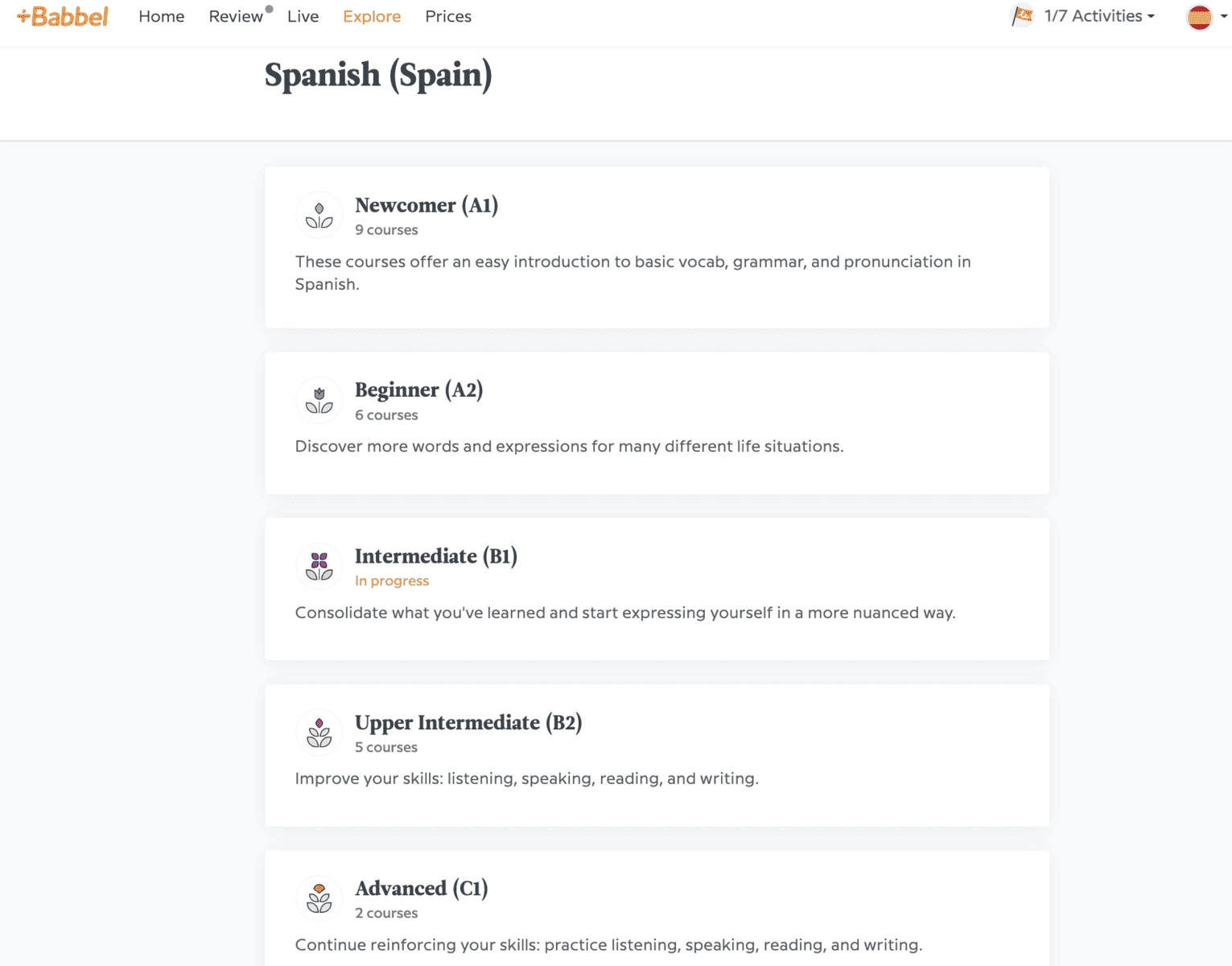
At 15 minutes a day for two weeks, I got through about half of the level, finishing Course 1 and Course 2, with two more courses remaining.
I definitely think it’s improved my confidence using certain vocabulary and grammar rules that I was unsure about before.
Mostly, the benefit of using the app is getting used to daily Spanish practice and training my brain to think in Spanish more often. Whenever I’m able to practice Spanish daily, that’s when I see the most progress.
However, Babbel isn’t perfect. I don’t think it’s fair to expect yourself to become fluent in Spanish, or any other language for that matter, just using a language learning app.
But, it’s a good starting point. You can go over grammar rules and memorize vocab, and that’s a core component of learning a language.
Babbel Review, Continued: How About Babbel Live?
Babbel Live involves hour-long video classes led by Spanish teachers, which you can sign up for based on your schedule.
There are classes offered at almost every hour of the day. That’s awesome for those of us (like me) who have busy schedules.
When you subscribe to the app, you get two Babbel Live classes free. Any additional classes come at a cost – as little as $50/month for unlimited classes when you get a yearly plan.
That’s honestly an incredible price, considering I’ve paid over $150 per month for live classes on other platforms (looking at you, Lingoda)!
However, the one drawback of Babbel Live is only group classes are offered – there are no privates available. In the one class I took during my trial, there were five other people in class with me, limiting the time I was able to practice.
The Lowdown on ALL Language Learning Apps

The reality is, apps like Babbel can be very helpful when it comes to memorization and learning grammar.
But – I hate to break it to you – if you expect to become fluent in another language just by using an app, you might want to rethink your expectations.
Sorry, I’m not sorry! There. I said it. 😬
A service like Babbel is an excellent gateway into getting more comfortable with other types of practice, like speaking in real life or online classes.
But from my experience, becoming better at a language often involves multiple methods – not just one.
If you’re wanting to become fluent, watch shows on Netflix in Spanish, listen to the news in Spanish, find YouTube lessons, listen to podcasts, pay for group or individual classes, practice with a friend in person — do it all. And do it every day.

One does not simply become proficient by studying verb charts and vocabulary meme paired with a Babbel Spanish review.
There simply is no easy path to becoming fluent, as I’ve learned many times on my own.
I can’t tell you how many times I’ve given up on Spanish – or just taken a few months off – only to revisit it later with renewed motivation.
I do think that taking short breaks here and there is essential to retaining your knowledge long-term.
Is Babbel Good for Spanish?
The short answer, in my opinion, is yes.
Why?
Because it gets you practicing daily – integrating language learning into your every day life.
This has literally happened to me: I’ll learn a new Spanish phrase in Babbel, and then the next day I watch a TV show, and one of the characters uses that same phrase.
It’s like magic when that happens. It all just starts to click.
So, what do you think? Are you ready to begin your journey learning Spanish?
If you’re looking for more ways to learn another language, check out my review of Lingopie, the ‘Netflix’ of language learning.
Read More About Language Learning:
Planning a trip right now? Here are a few top resources I use on every trip:
🏨 Booking.com for great deals on hotels.
🎟️ GetYourGuide for incredible tours around the world.
🌍 Faye for travel insurance with great customer support.
📞 eSIM for staying connected in the air, on a cruise ship, or exploring on foot.
🗣️ Babbel for brushing up on my language skills.
Like this project
Posted Nov 11, 2024
I wrote an SEO-optimized blog post review of my experience with Babbel, which ranked #1 in Google search results and generated over 3,000 monthly pageviews.
Likes
0
Views
3




